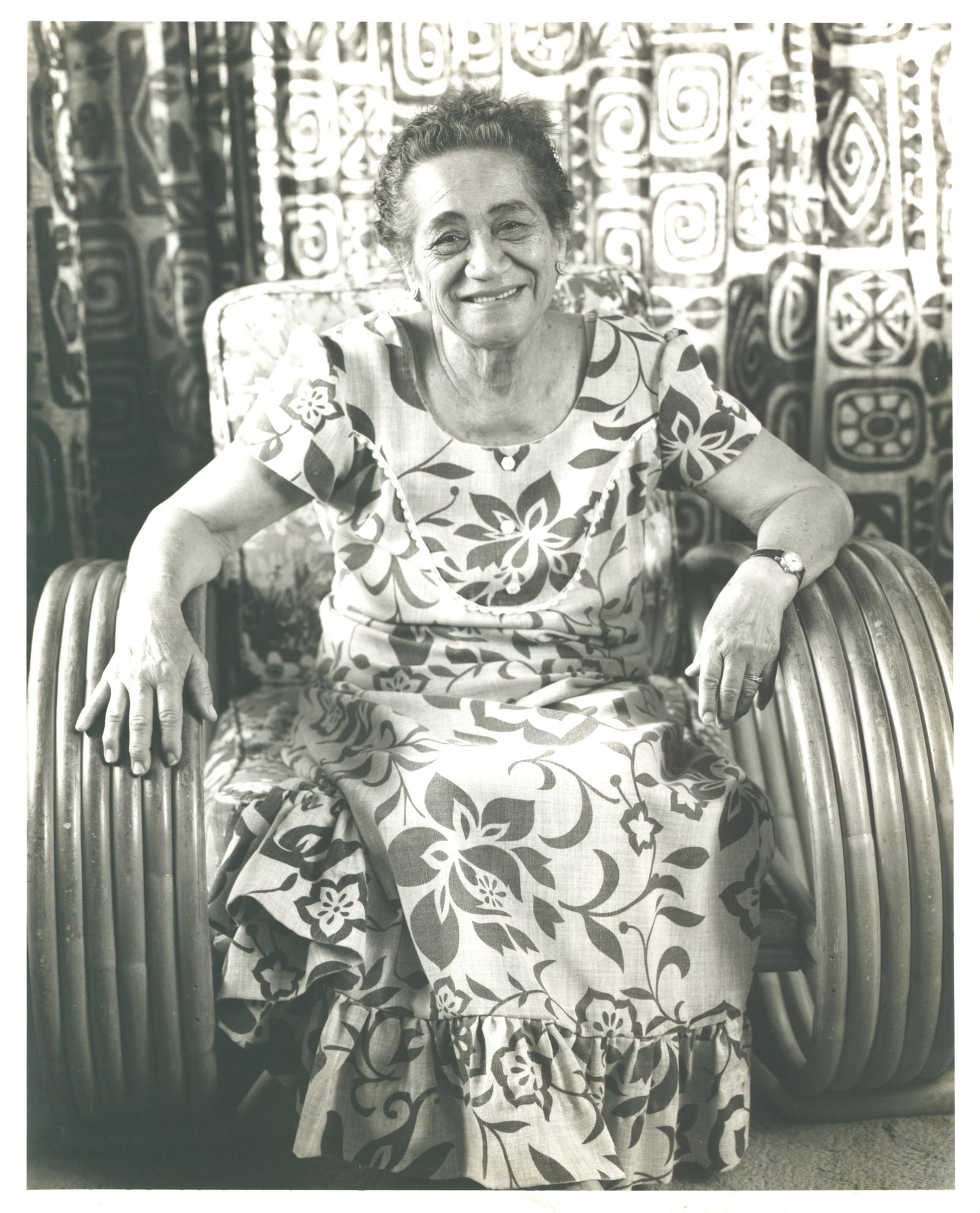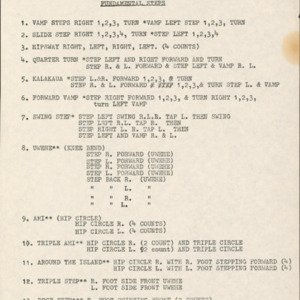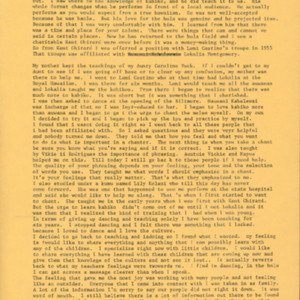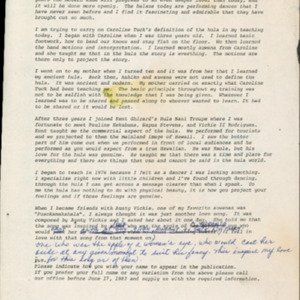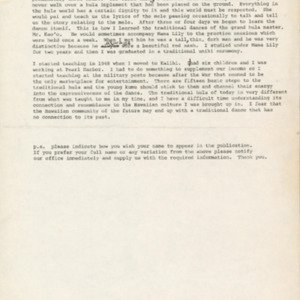Pearl Keawe
Title
Pearl Keawe
Description
Pearl Keawe
Pearl Keawe has taught the hula in Hawaiʻi for thirty-three years and her hula studio is presently located in the Kalihi Valley area of O‘ahu.
I became interested in the hula through my late sister-in-law Caroline Tuck, a renown Hawaiian entertainer and hula instructor. She performed throughout Hawai‘i with Alice Keawekāne Garner and Frances Palama. Carolines studio was located on Pu‘uhale Street and I began to train under her in 1927 when I was twenty-three years old. I was taught modern hula by Caroline and her style of hula was to always bend low in your motion and dance from your heart.
I also received private instruction in the art of ancient hula from Mrs. Lily Polani, a student of Mr. Ka‘ō‘ō. Her classes were held at her home in Kāne‘ohe and lasted approximately three hours. The first thing I learned from Mama Lily was that you should never walk over a hula implement that had been placed on the ground. Everything in the hula world has a certain dignity to it and this world must be respected. She would pah and teach us the lyrics of the mele pausing occasionally to talk and tell us the story relating to the mele. After three or four days we began to learn the dance itself. This is how I learned the traditional dances of the grand hula master Mr. Ka‘ō‘ō. He would sometimes accompany Mama Lily to the practice sessions which were held once a week. When I met him, he was a tall, thin, dark man and he was very distinctive because he always wore a beautiful red sash. I studied under Mama Lily for two years and then I was graduated in a traditional ‘uniki ceremony.
I started teaching in 1948 when I moved to Kalihi. I had six children and I was working at Pearl Harbor. To supplement our income, I started teaching hula at the military posts because after the war that seemed to be the only marketplace for entertainment.
There are fifteen basic steps to the traditional hula and the young kumu should stick to them and channel their energy into the expressiveness of the dance. The traditional hula of today is very different from what was taught to me in my time and I have a difficult time understanding its connection and resemblance to the Hawaiian culture I was brought up in. I fear that the Hawaiian community of the future may end up with a traditional dance that has no connection to its past.
Pearl Keawe has taught the hula in Hawaiʻi for thirty-three years and her hula studio is presently located in the Kalihi Valley area of O‘ahu.
I became interested in the hula through my late sister-in-law Caroline Tuck, a renown Hawaiian entertainer and hula instructor. She performed throughout Hawai‘i with Alice Keawekāne Garner and Frances Palama. Carolines studio was located on Pu‘uhale Street and I began to train under her in 1927 when I was twenty-three years old. I was taught modern hula by Caroline and her style of hula was to always bend low in your motion and dance from your heart.
I also received private instruction in the art of ancient hula from Mrs. Lily Polani, a student of Mr. Ka‘ō‘ō. Her classes were held at her home in Kāne‘ohe and lasted approximately three hours. The first thing I learned from Mama Lily was that you should never walk over a hula implement that had been placed on the ground. Everything in the hula world has a certain dignity to it and this world must be respected. She would pah and teach us the lyrics of the mele pausing occasionally to talk and tell us the story relating to the mele. After three or four days we began to learn the dance itself. This is how I learned the traditional dances of the grand hula master Mr. Ka‘ō‘ō. He would sometimes accompany Mama Lily to the practice sessions which were held once a week. When I met him, he was a tall, thin, dark man and he was very distinctive because he always wore a beautiful red sash. I studied under Mama Lily for two years and then I was graduated in a traditional ‘uniki ceremony.
I started teaching in 1948 when I moved to Kalihi. I had six children and I was working at Pearl Harbor. To supplement our income, I started teaching hula at the military posts because after the war that seemed to be the only marketplace for entertainment.
There are fifteen basic steps to the traditional hula and the young kumu should stick to them and channel their energy into the expressiveness of the dance. The traditional hula of today is very different from what was taught to me in my time and I have a difficult time understanding its connection and resemblance to the Hawaiian culture I was brought up in. I fear that the Hawaiian community of the future may end up with a traditional dance that has no connection to its past.
Citation
“Pearl Keawe,” Nā Kumu Hula Archive, accessed October 14, 2025, https://nakumuhula.org/archive/items/show/60.

